Published on July 8, 2023
Reading Time: 8 min
UCAT Quantitative Reasoning Tips & Questions
Quantitative Reasoning is the third section of the UCAT and comes after the decision making section of the UCAT. It is also generally one of the better performed sections and is a great opportunity to boost your score. In this article, we’ll go over worked examples of the different types of common maths questions and formulae needed, guiding you on tackling each UCAT Quantitative Reasoning question type. You’ll also be given an introduction to additional topics such as tax and drug calculations and our top tips and tricks to tackling the Quantitative Reasoning subtest!
What is UCAT Quantitative Reasoning?
This section is designed to test your numerical and problem-solving skills at GCSE standard.
Quantitative Reasoning consists of a series of multiple-choice questions that test mathematical skills. This includes basic arithmetic, percentages, ratios, proportions, and data interpretation. You’ll be required to analyze and apply numerical information to solve problems within a limited time frame. This section evaluates a candidate’s quantitative reasoning abilities, which are essential skills for success in your medical journey
UCAT Quantitative Reasoning Score
The average score in Quantitative Reasoning for the 2024 testing cycle was 649 which makes it the highest scoring section out of the current UCAT sections.
What is a Good Quantitative Reasoning Score?
A “good” score for Quantitative Reasoning for the UCAT would be a score that is above the average for your testing cycle. Universities typically focus on your overall average UCAT score for admissions purposes. Our free resource has the most up-to-date UCAT scores needed for medicine for each university in 2024. Check out ‘Master the UCAT by the Top 1%‘, our #1 Amazon Bestselling UCAT book to learn all the tips and tricks necessary for improving your score and achieving 800+ on Quantitative Reasoning!
UCAT Quantitative Reasoning Time
You will have 26 minutes to answer 36 questions. This gives an average of 43 seconds per question.
The questions will be of varying difficulty, randomly drawn from a large database. Some may require simple calculations that can be completed within seconds, while others may be multi-step and more complex. You will be given scenarios with 1-6 associated questions, although most scenarios will have around 3 follow-up questions. Questions will each have 5 answer choices. Scenarios may be associated with tables, diagrams, charts, graphs, and other numerical presentations to use as reference when answering questions.
Quantitative Reasoning Question Types
Here’s a summary of general strategies when answering Quantitative Reasoning questions:
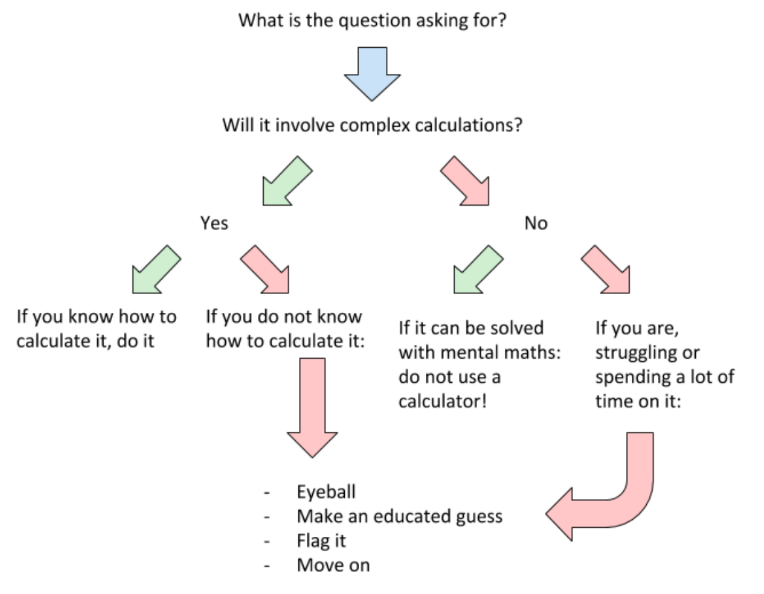
See some example questions below to give you an idea of the general strategies used in UCAT Quantitative Reasoning. We dive deeper into Quantitative Reasoning strategies in our UCAT resources by top 1% scorers, such as our 2-day live UCAT course, our 175-lesson online UCAT course (bitesized video lessons), best selling UCAT book (updated for 2023), UCAT revision series, UCAT revision planner, and one-to-one UCAT tutoring.
Percentages
- Use decimals
- Omit the zero
- Practice converting words to decimals
- Divide to get a percentage
Taxes
A common misconception is that income can only fall into a single band or category e.g. someone with an income of £60,000 will pay 40% tax, or £24,000. This is completely incorrect – taxes add up! Individuals fall into a certain tax band, but also fall into every tax band before this. Therefore, a person earning £60,000 would pay 0% tax on the first £12,500 of their income, 20% tax on the next £37,499, and 40% tax on the final £9,999 of their income. The total would then come to £11,499.40 – significantly less than the miscalculated £24,000.
Ratios
Ratios can present in the UCAT’s Quantitative Reasoning subtest in various ways. For example, you may be given a ratio and be asked to calculate the total number of items in the ratio e.g. if there are 7 girls to 14 boys in a classroom, the total number of students in the classroom is 21. Although the number 21 isn’t mentioned anywhere in the ratio, you should be familiar with the concept of adding both parts of a ratio to obtain the total.
Time Zone Problems
Occasionally, you may be given questions that require you to convert time from one time zone to another in order to solve problems. Besides casual use of this skill, this type of Quantitative Reasoning question is relevant as you may need to convert time zones as a doctor. Healthcare professionals are often responsible for making phone calls to family members of patients. If a family member is abroad, it’s important to note the time zone difference and determine an appropriate time to make a call.
Probability
Probability can be defined as the likelihood of an event occurring, with a maximum value of 1 which represents an event that will definitely occur. Once you understand the maths behind probability, we recommend using tree diagrams to solve questions, as a visual representation is easier to process for most people. However, tree diagrams are not useful if you don’t understand the concepts that they represent.
Probability in Quantitative Reasoning can be a complex topic which students often struggle with. For further support to help you excel at probability questions each time, check out our bestselling UCAT book, ‘Master the UCAT by the Top 1%‘, as well as our on-demand UCAT video series.
Statistics
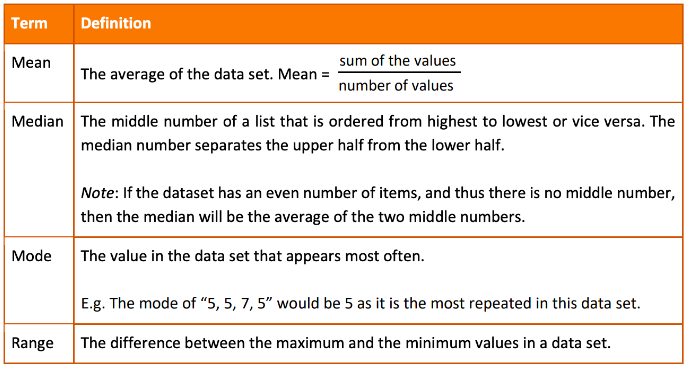
Data Interpretation
Some questions in UCAT Quantitative Reasoning will ask you to interpret a data set, such as a chart or a graph, without necessarily performing any calculations. The data is followed by a series of statements, and you will need to decipher which of them are true or untrue based on the data.
Usually, two types of questions regarding data interpretation will be present during the exam.
- You will be asked to identify the correct (or incorrect) statement.
- You will be asked to identify whether the statement given is True, False, or Can’t Tell.
Both of these question types may possess statements that are “Can’t Tell”. The question writers have various tricks they can implement in these types of questions. These are comparable to tricks used in Verbal Reasoning, and would often point towards the answer being “Can’t Tell”.
Formulas
Averages:
Average refers to the mean of a set of data, i.e. the sum of the values, divided by the number of values.

Speed, Distance, and Time:
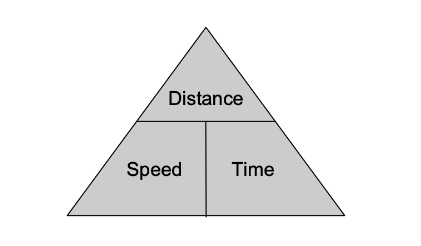
Midpoints:

The probability of an event occurring:

Geometry

Volume
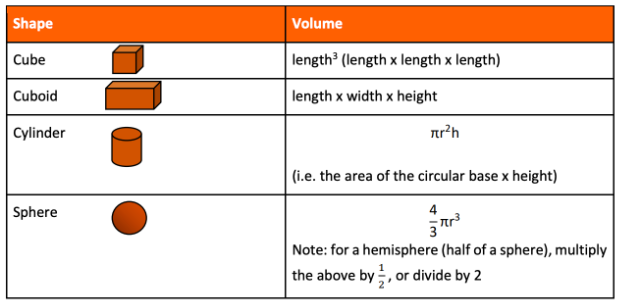
Density
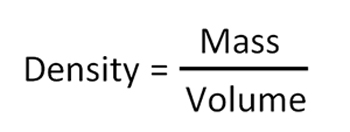
Example:
Gabriel is installing a small cylinder-shaped baby bath in his side room. The measurements of the bath are as follows:



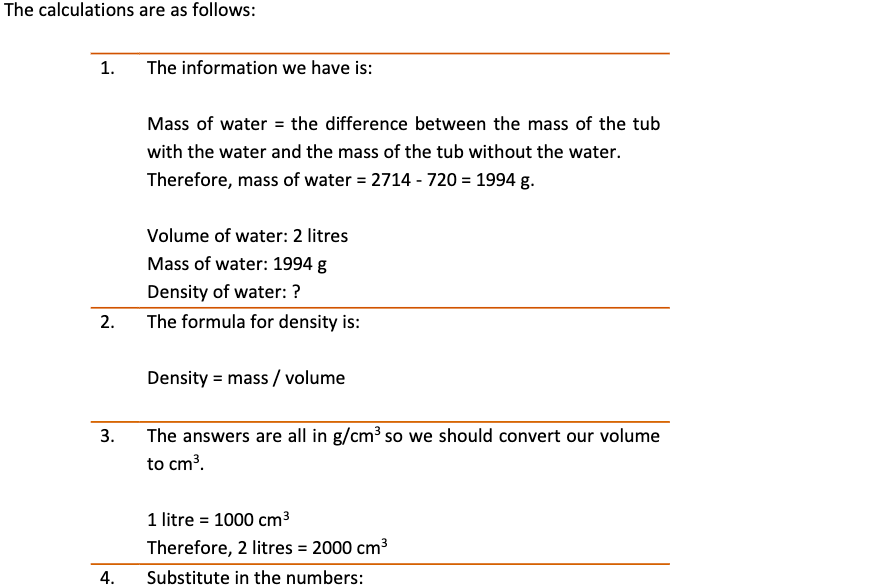

The correct answer is B.
Pythagoras Theorem
This theorem, applicable only to right-angle triangles, allows us to calculate the length of an unknown side given information about the other two sides. Given a triangle such as below, the theorem states that:
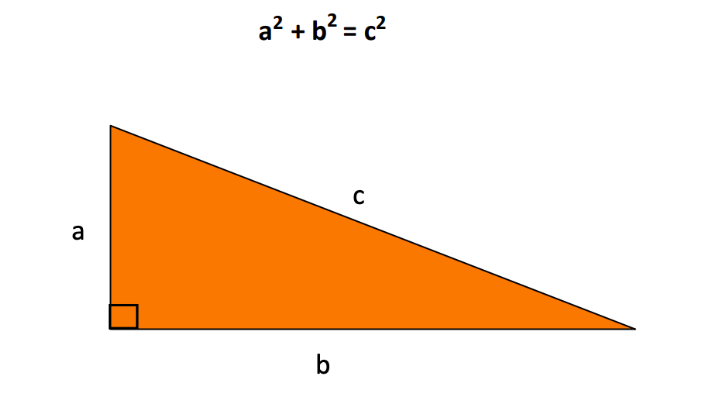
UCAT Calculator
The following diagram demonstrates the format of the UCAT calculator, annotated with functions and usage of each key.
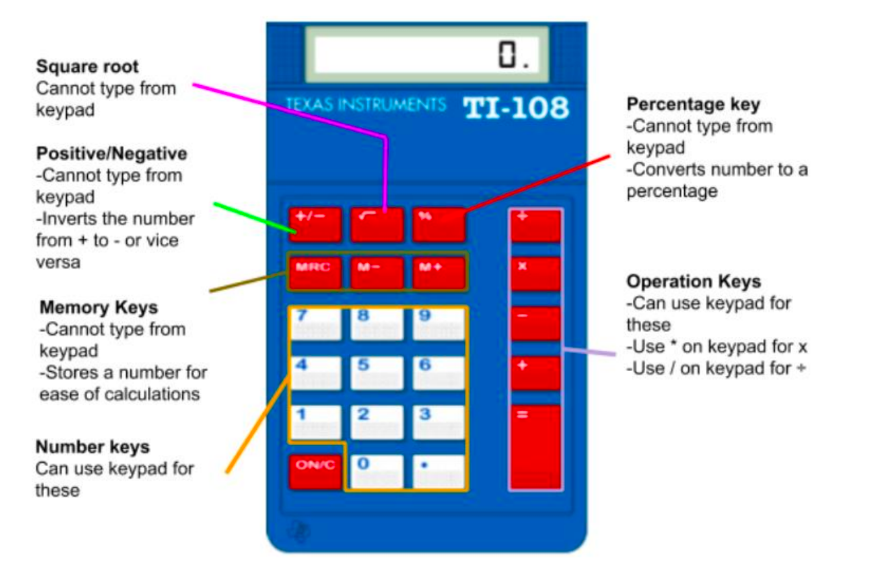
UCAT Quantitative Reasoning Calculator Top Tips:
1. Use it when you need to
You will only be able to mentally calculate certain questions – don’t pressure yourself into doing everything in your head! Although it’s beneficial to work on your mental maths, know your limits and adapt to them by practising using the calculator as well.
2. Avoid using your mouse!
Use the keypad for as many buttons as possible. This may seem obvious, but it will save you a lot of time.
3. Practice keying in the numbers quickly and accurately
If you can key in the numbers without looking down at the keypad, you’ll be able to watch the screen instead. This will allow you to ensure accuracy of your calculations and instantly correct your mistakes when necessary.
4. Use the memory key if necessary
It will remember the number you input and save you time from recalculating or writing it down. Alternatively, you can keep the numbers in the whiteboard or scratchpad.
5. When possible, only use the “equals” function at the end
Try to make continuous calculations as much as possible. This is much faster than putting your answers onto the whiteboard/scratchpad.
UCAT Quantitative Reasoning Top Tips
Know what the question is asking for
It’s critical that you understand the question and identify the relevant information given. This may involve referring back to the scenario when answering the question.
Eyeball if possible
It might be possible to deduce the answer at times by simply doing mental maths or eyeballing the answers. This will help you save a lot of time!
Skim the questions before answering
A couple of times in the exam, a stem may have a multi-step question prior to a different question that is simply one of the steps of the previous question. You can save time by answering simpler questions first – it will give you one of the values you need for the multi-step question. If you do the multi-step question first, you are likely to have rubbed out the steps or removed them from your calculator already, so you’ll have to redo this step to answer the following question. Therefore, it’s worth skimming the questions before answering them to see if this is the case.
Note: Don’t prioritise this tip too much, as this may only happen a couple of times in your UCAT exam.
Round values when possible
Sometimes, a question will ask for an ‘approximate’ answer. In this case, you can round the values given to be more practical to use for mental maths.
Practice graph questions
If you struggle with graph questions, you should practice these in your own time. Start with easier graphs, then move on to research papers that have more complex data and spend your time trying to interpret them. The better your interpretation and analysis skills get, the quicker you’ll be able to answer these types of Quantitative Reasoning questions.
Know your equations
The exam will not provide you with any formulae other than the mile → kilometres conversion. Check out our UCAT book to learn all of the formulae necessary for UCAT Quantitative Reasoning!
We hope this article was useful for your UCAT preparation! It’s an excerpt from our popular UCAT resources, created by top 1% scoring candidates!
Check out the best UCAT resources, such as our 2-day live UCAT course, online UCAT course (175 lessons), UCAT book, UCAT revision series, UCAT revision planner, and one-to-one UCAT tutoring for more UCAT support.
Get UCAT Tutoring
Many students find it vital to have a tutor for A-level subjects but don’t place as high of an importance on their UCAT score, which is equally, if not more important for getting into medical or dental school. A tutor is not only necessary when getting stuck on difficult concepts and questions. Having a specialized teacher for UCAT tutoring to support you through your entire revision journey can hugely impact your score and help you secure interviews.
With over 37,000 people who sit the UCAT every year, and limited places in medical and dental school, university acceptance is extremely competitive. You must work towards a top score to secure the second stage of the application process – interviews.
Book in with a MedicHut UCAT tutor now to maximize your UCAT preparation and chances of success.













